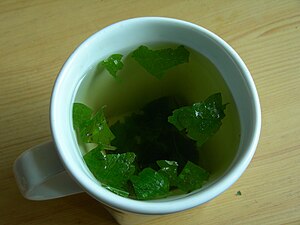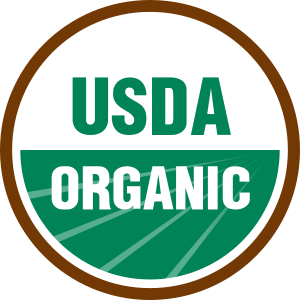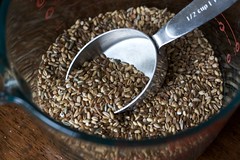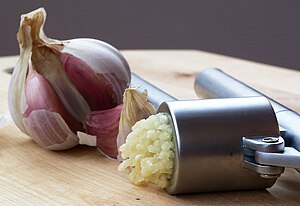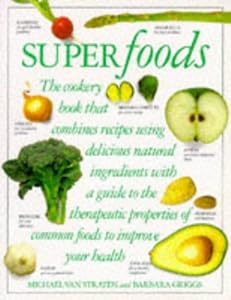 Image via Wikipedia1. Eat lots of wild-caught fish. (As an aside, it's interesting to note that the diet of the Eskimos, who live in a part of the world where there is no sunshine at all for long periods, includes lots of fish oil and is therefore rich in Vitamin D.) In descending order, some of the fish highest in Vitamin D are as follows:
Image via Wikipedia1. Eat lots of wild-caught fish. (As an aside, it's interesting to note that the diet of the Eskimos, who live in a part of the world where there is no sunshine at all for long periods, includes lots of fish oil and is therefore rich in Vitamin D.) In descending order, some of the fish highest in Vitamin D are as follows:* Herring
* Catfish
* Sockeye salmon
* Steelhead trout
* Halibut
* Sardines
* Mackerel
* Tuna packed in oil
It's also very beneficial to augment the diet with cod liver oil and fish oil supplements.
2. Choose a good Vitamin D supplement. Some recommend Vitamin D3, as this is said to be the effective and the least likely to cause problems if taken in large amounts. Most supplements are in increments of 1000 IU - take up to 5000 IU per day. Children under the age of ten should have less; no more than 2000 IU is suggested for children aged two to four, and no more than 3000 is recommended for children under ten.
 Image by colindunn via Flickr3. Increase your Vitamin D intake if you have been exposed to the flu. You can take up to 10,000 IU if you think you've been exposed. Make the necessary adjustments for children.
Image by colindunn via Flickr3. Increase your Vitamin D intake if you have been exposed to the flu. You can take up to 10,000 IU if you think you've been exposed. Make the necessary adjustments for children.4. Get outside in the sun when you can. It can be tough in the wintertime, but go outside as much as possible on sunny days. While your face may be the only skin exposed to the sun, it may still provide a bit of help.
5. Supplement your Vitamin D with common sense. You can also help your immune system ward off infection by getting regular exercise and enough sleep, and of course avoiding those who are contagious if at all possible. Be sure to wash your hands well and often during cold and flu season. It's amazing how much of a difference just these little common-sense things can help!
Note: Extremely high doses of Vitamin D can be toxic, so if you plan to take high doses of Vitamin D for extended periods of time, you will want to consult with a naturopathic physician and get your blood levels checked. Most people in North America are actually deficient in Vitamin D (some extremely so), so normally this will not be a problem, but you may still want to get tested to be sure.
Note: Due to the holidays, we won't be posting next week, but we hope you all have a wonderful, fun, and safe holiday! Be sure to check back in the New Year for some more great tips on living a clean & green healthy life in 2012 and beyond!
















